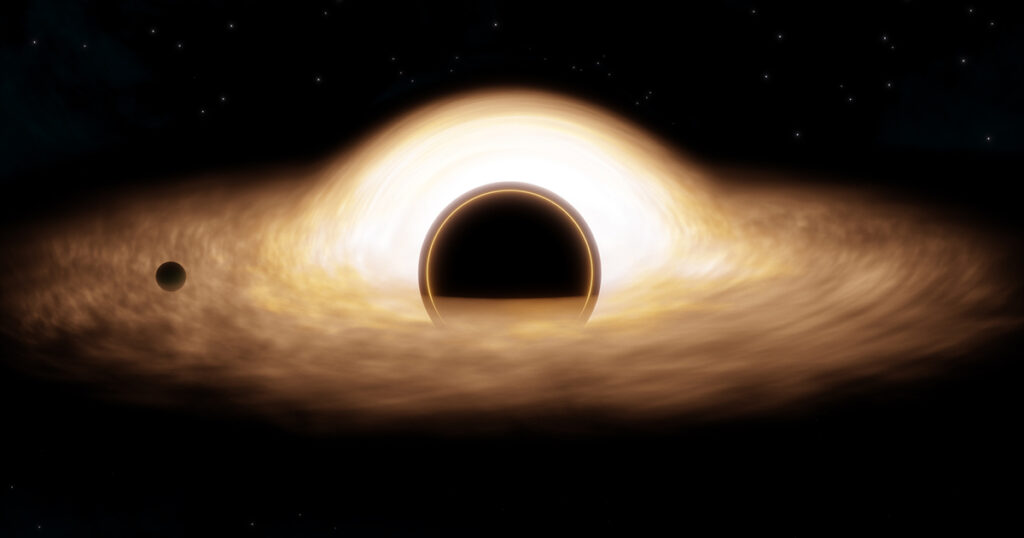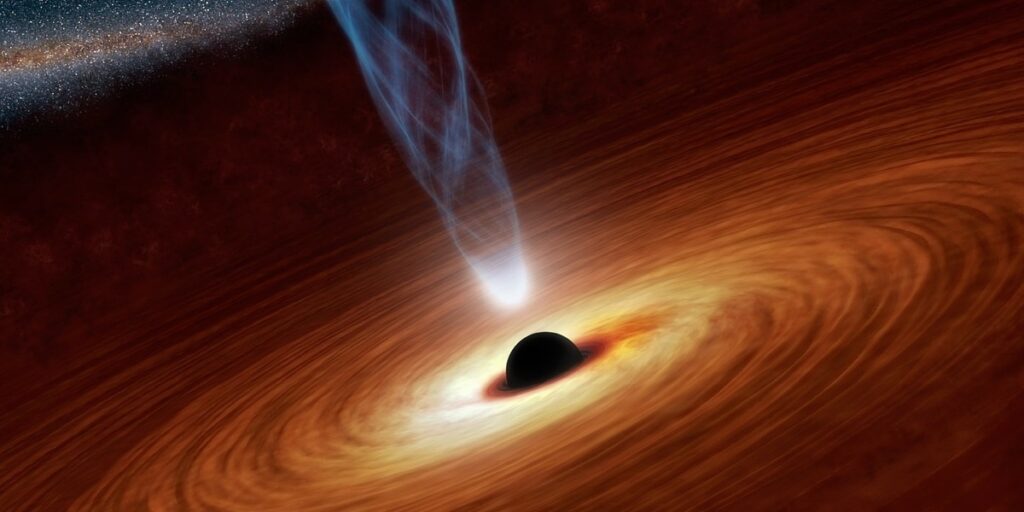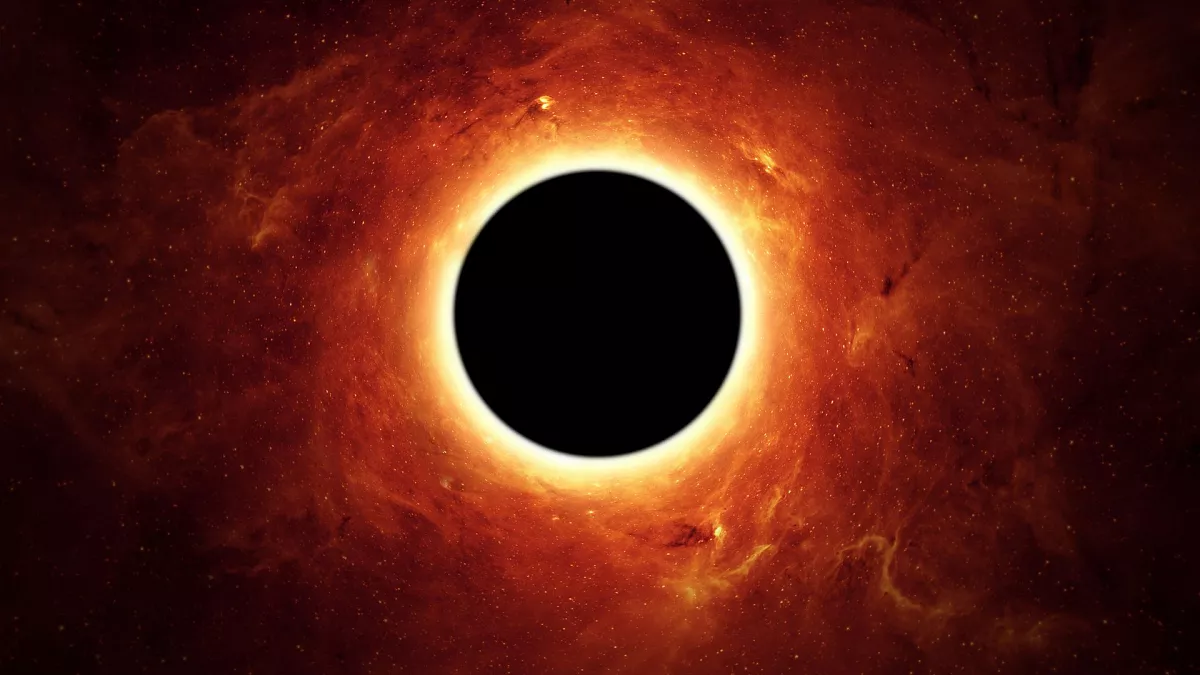Black holes are among the most fascinating and enigmatic phenomena in the universe. These cosmic entities, formed from the remnants of massive stars, are so dense that not even light can escape their gravitational pull. Despite being invisible, their presence profoundly influences the fabric of space and time, as well as the behavior of nearby matter and radiation. But what exactly makes black holes so mysterious? Let’s unravel the science behind these celestial enigmas.
What Are Black Holes?
A black hole is a region in space where the gravitational pull is so strong that nothing—not even light—can escape. This occurs because a massive amount of matter is compressed into an extremely small area, leading to infinite density, or what is known as a singularity.
Key Characteristics of Black Holes:
- Event Horizon: The “point of no return.” Once matter or light crosses this boundary, it cannot escape.
- Singularity: The core of the black hole where gravity is theoretically infinite, and the laws of physics as we know them break down.
- Accretion Disk: A swirling ring of superheated gas and matter that forms as material spirals into the black hole.
- Jet Streams: High-energy jets of particles ejected along the poles of the black hole, often seen in supermassive black holes.
The Formation of Black Holes

Black holes are primarily formed through the death of massive stars. Here’s how it happens:
- Stellar Collapse: When a massive star exhausts its nuclear fuel, it can no longer counteract the force of gravity. The core collapses under its own weight, and if the core’s mass exceeds about three times that of the Sun, it becomes a black hole.
- Merging Objects: Black holes can also form from the collision and merging of two neutron stars or smaller black holes.
- Primordial Black Holes: Hypothetical black holes formed shortly after the Big Bang, potentially explaining dark matter.
Types of Black Holes
Black holes come in various sizes, each with unique characteristics:
- Stellar-Mass Black Holes:
- Formed from collapsing stars.
- Typically 3 to 10 times the mass of the Sun.
- Intermediate-Mass Black Holes:
- Rarer and less understood.
- Range between 100 and 100,000 solar masses.
- Supermassive Black Holes:
- Found at the centers of most galaxies, including our Milky Way.
- Range from millions to billions of solar masses.
- Micro Black Holes:
- Hypothetical tiny black holes that could have formed during the Big Bang.
- Potentially observable through high-energy particle collisions.
What Makes Black Holes So Mysterious?

1. The Singularity
The singularity is where gravity becomes infinite, and the known laws of physics break down. Theoretical frameworks, such as quantum gravity, aim to explain this region, but it remains one of the greatest unsolved mysteries in physics.
2. Information Paradox
When matter falls into a black hole, what happens to the information it carries? According to quantum mechanics, information cannot be destroyed, but black holes seem to obliterate it. This paradox challenges our understanding of physics.
3. Wormholes and Time Travel
Some theories suggest that black holes could be gateways to other parts of the universe or even other dimensions. These speculative ideas are grounded in Einstein’s general relativity, but they remain unproven.
4. Dark Energy and Black Holes
Some researchers propose that black holes might be connected to dark energy, the mysterious force driving the universe’s accelerated expansion. This intriguing hypothesis is still under investigation.
How Do We Study Black Holes?
Since black holes emit no light, their study relies on indirect observations. Here are the primary methods used by astronomers:
1. Observing Accretion Disks
As matter spirals into a black hole, it heats up and emits X-rays. These emissions provide valuable information about the black hole’s properties.
2. Gravitational Waves
The collision and merging of black holes produce ripples in spacetime, known as gravitational waves. These waves were first detected in 2015 by the LIGO and Virgo observatories, opening a new era in black hole research.
3. Imaging the Event Horizon
In 2019, the Event Horizon Telescope (EHT) captured the first-ever image of a black hole, located in the galaxy M87. This groundbreaking achievement provided direct evidence of black holes and insights into their structure.
4. Tracking Stellar Motion
Astronomers observe the motion of stars near a suspected black hole. For example, the stars orbiting Sagittarius A*, the supermassive black hole at the center of our galaxy, provide strong evidence of its existence.
Famous Black Holes
- Sagittarius A*:
- Located at the center of the Milky Way.
- Approximately 4 million solar masses.
- M87 Black Hole*:
- The first black hole to be imaged by the Event Horizon Telescope.
- Over 6.5 billion solar masses.
- Cygnus X-1:
- One of the first black holes discovered.
- A stellar-mass black hole in a binary system with a massive star.
- TON 618:
- One of the most massive known black holes.
- An estimated 66 billion solar masses.
Black Holes and the Universe
Black holes play a crucial role in the evolution of galaxies and the cosmos:
- Galactic Centers: Supermassive black holes anchor galaxies, influencing their formation and dynamics.
- Star Formation: Black hole activity can regulate star formation by expelling gas and dust through jets and winds.
- Cosmic Recycling: Black holes consume matter and release energy, contributing to the cosmic ecosystem.
Unsolved Questions and Future Research
- What Lies Beyond the Event Horizon? While we can theorize, no direct observation of a black hole’s interior is possible with current technology.
- Primordial Black Holes and Dark Matter Could primordial black holes account for dark matter? Researchers are exploring this possibility using gravitational lensing and other techniques.
- Quantum Mechanics and General Relativity Reconciling these two pillars of physics is essential to fully understand black holes.
- Are There White Holes? Theoretical counterparts to black holes, white holes, could eject matter instead of consuming it. However, no evidence has yet been found.
Conclusion
Black holes remain one of the most captivating subjects in astrophysics, blending the boundaries of science and imagination. Their study not only deepens our understanding of the universe but also challenges our perceptions of reality itself. As new technologies and theories emerge, we edge closer to unraveling their mysteries, bringing us a step closer to comprehending the cosmos and our place within it.



